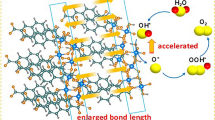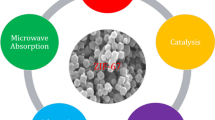Abstract
Metal-organic frameworks (MOFs) are an interesting class of molecule-based hybrid materials built from metal-connecting points and bridging ligands. MOFs have received much attention, owing to their potential impact on many technological areas, including gas storage, separation, and heterogeneous catalysis. The modular nature of MOFs endows them with facile tunability, and as a result, properly designed MOFs can yield ideal heterogeneous catalysts with uniform active sites through judicious choice of the building blocks. Homochiral MOFs, which can be prepared by numerous approaches (construction from achiral components by seeding with a chiral single crystal, templating with coordinating chiral co-ligands, and building from metal-connecting nodes and chiral bridging ligands), represent a unique class of materials for the economical production of optically pure compounds, whether through asymmetric catalysis or enantioselective inclusion of chiral guest molecules in their porous frameworks. As such, homochiral MOFs promise new opportunities for developing chirotechnology. This contribution provides a brief overview of recent progress in the synthesis of homochiral porous MOFs and their applications in asymmetric catalysis and chiral separations.
Similar content being viewed by others
References
A. Corma, Chem. Rev. 97, 2373 (1997).
H. Lee, S.I. Zones, M.E. Davis, Nature 425, 385 (2003).
M.W. Anderson et al., Nature 367, 347 (1994).
J.M. Newsam, M.M.J. Treacy, W.T. Koetsier, C.B. de Gruyter, Proc. R. Soc. London, Ser. A 420, 375 (1988).
S.R. Batten, R. Robson, Angew. Chem. Int. Ed. 37, 1461 (1998).
M. Munakata, L.P. Wu, T. Kuroda-Sowa, Adv. Inorg. Chem. 46, 173 (1999).
M. Eddaoudi et al., Acc. Chem. Res. 34, 319 (2001).
O.R. Evans, W. Lin, Acc. Chem. Res. 35, 511 (2002).
S. Lee et al., Acc. Chem. Res. 38, 251 (2005).
K.S. Suslick et al., Acc. Chem. Res. 38, 283 (2005).
P. Feng, X. Bu, N. Zheng, Acc. Chem. Res. 38, 293 (2005).
S. Kitagawa, R. Kitaura, S.-I. Noro, Angew. Chem. Int. Ed. 43, 2334 (2004).
T. Ezuhara, K. Endo, Y. Aoyama, J. Am. Chem. Soc. 121, 3279 (1999).
C.J. Kepert, T.J. Prior, M.J. Rosseinsky, J. Am. Chem. Soc. 122, 5158 (2000).
D. Bradshaw et al., J. Am. Chem. Soc. 126, 6106 (2004).
D.N. Dybtsev et al., Angew. Chem. Int. Ed. 45, 916 (2006).
J.D. Ranford, J.J. Vittal, D. Wu, X. Yang, Angew. Chem. Int. Ed. 38, 3498 (1999).
B.F. Abrahams, M. Moylan, S.D. Orchard, R. Robson, Angew. Chem. Int. Ed. 42, 1848 (2003).
W.S. Sheldrick, Acta Crystallogr. B37, 1820 (1981).
R.-G. Xiong et al., Angew. Chem. Int. Ed. 40, 4422 (2001).
K. Aoki, W. Saenger, J. Inorg. Biochem. 19, 269 (1983).
Y. Cui, S.J. Lee, W. Lin, J. Am. Chem. Soc. 125, 6014 (2003).
B. Kesanli et al., Angew. Chem. Int. Ed. 44, 72 (2005).
H.L. Ngo, W. Lin, J. Am. Chem. Soc. 124, 14298 (2002).
C.-D. Wu, W. Lin, Angew. Chem. Int. Ed. 44, 1958 (2005).
J.S. Seo et al., Nature 404, 982 (2000).
C.-D. Wu, A. Hu, L. Zhang, W. Lin, J. Am. Chem. Soc. 127, 8940 (2005).
C.-D. Wu, W. Lin, Angew. Chem. Int. Ed. 46, 1075 (2007).
S.-H. Cho et al., Chem. Commun., 2563 (2006).
A. Hu, H.L. Ngo, W. Lin, Angew. Chem. Int. Ed. 42, 6000 (2003).
A. Hu, H.L. Ngo, W. Lin, J. Am. Chem. Soc. 125, 11490 (2003).
O.R. Evans, H.L. Ngo, W. Lin, J. Am. Chem. Soc. 123, 10395 (2001).
Rights and permissions
About this article
Cite this article
Lin, W. Metal-Organic Frameworks for Asymmetric Catalysis and Chiral Separations. MRS Bulletin 32, 544–548 (2007). https://doi.org/10.1557/mrs2007.104
Published:
Issue Date:
DOI: https://doi.org/10.1557/mrs2007.104




